Although an increasing number of modern materials, from plastic to linoleum or melamine, is available for architects and designers these days, they keep selecting wood as the primary construction and finishing material for interiors. No wonder. For centuries, wood has been used to enrich living spaces by its warm surface, versatility and tactility. Today, modern technologies combined with age-old carpenters craftsmanship traditions to deliver eye-catching interiors that look both contemporary and welcoming.
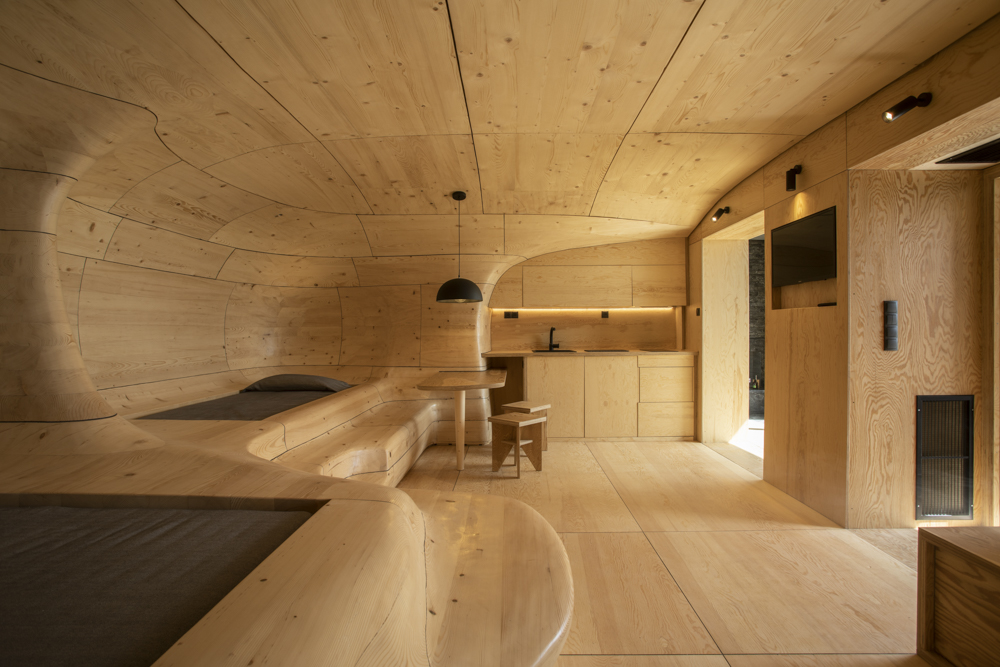
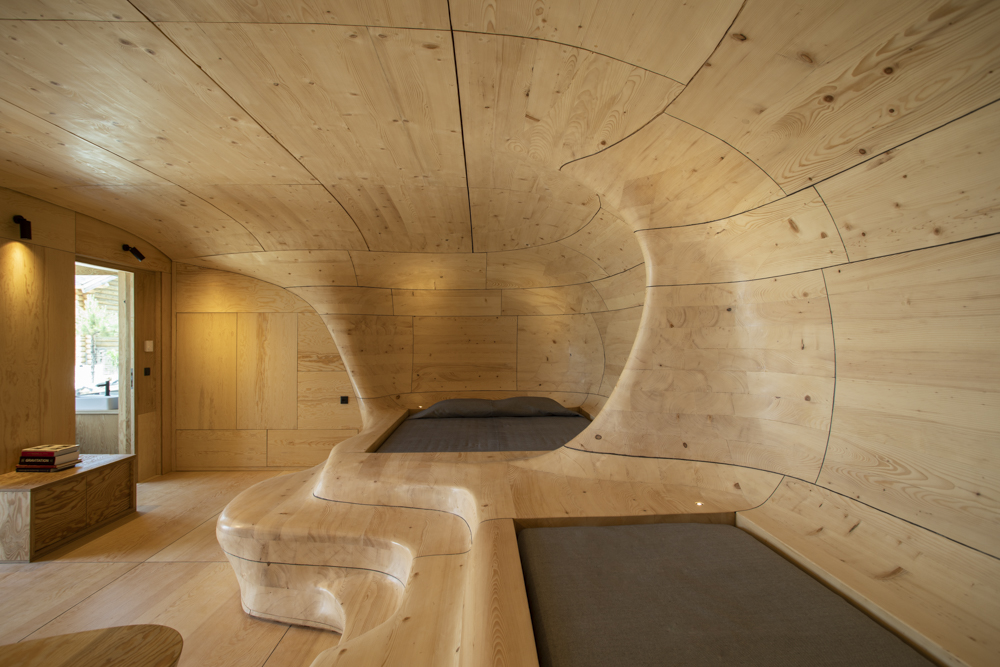
Wooden Cave by Tenon Architecture (also header image)
Athens-based studio Tenon Architecture has transformed an existing space of the Hyades Mountain Resort in Southern Greece into Wooden Cave, an undulating wooden interior of hospitality and leisure. The choice of wood as the primary building material, as well as the curved surfaces of the space, help to recreate a warm and welcoming environment that retains the archetypical feeling of a natural cave, which once provided shelter for humankind and protection from the natural elements.
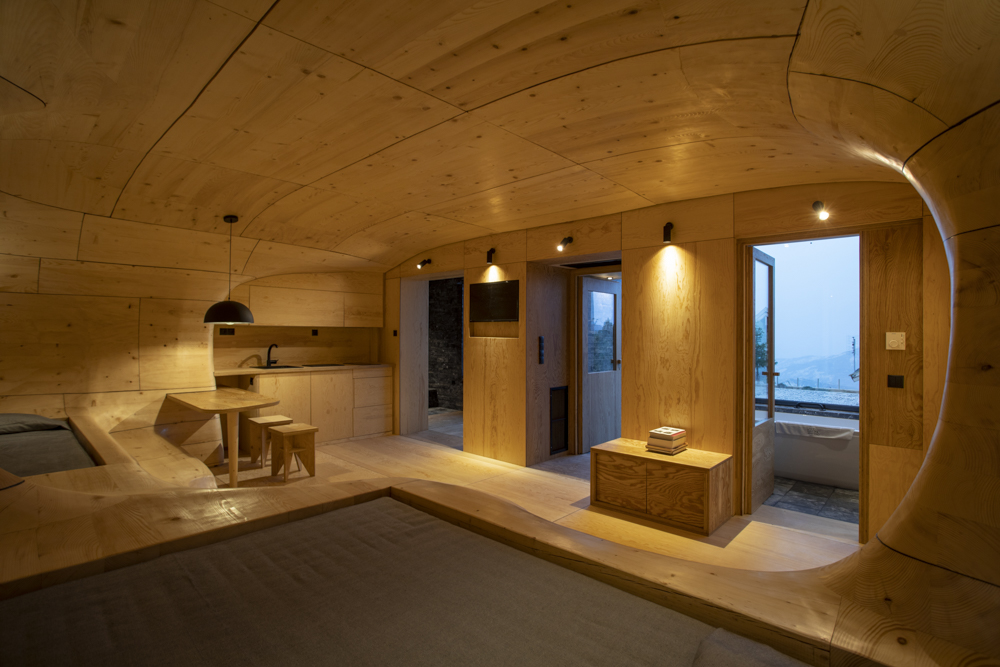
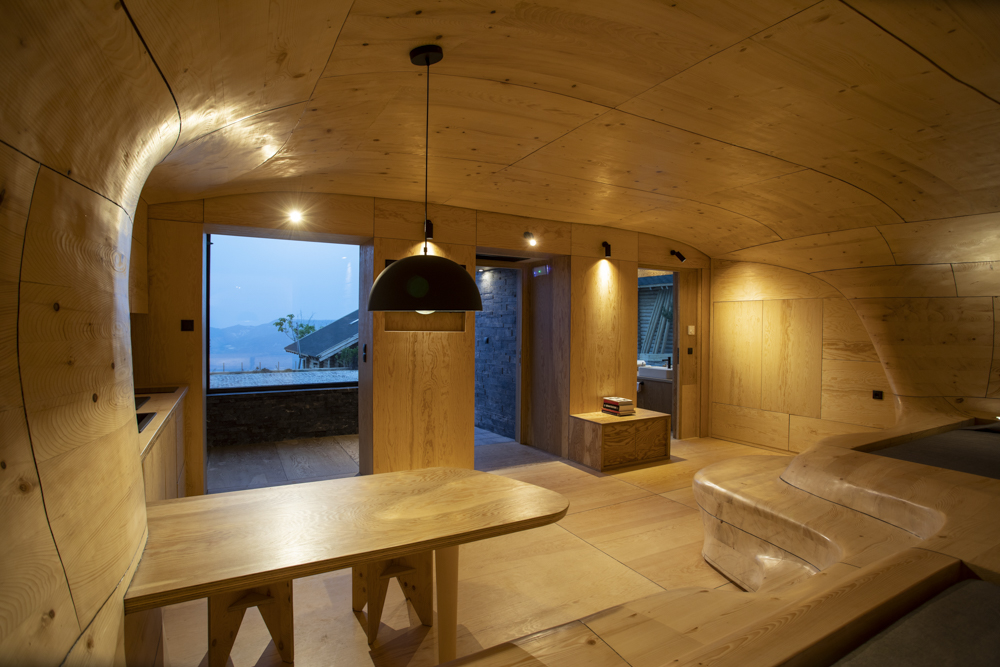
Wooden Cave by Tenon Architecture
The project comprises a guest room with two integrated beds, a kitchen, a bathroom, and a living room with a fireplace, enclosing visitors within a well-equipped contemporary shelter. The curved structure, which consists of 1,112 different curved wooden pieces, was constructed on-site without using any digital fabrication methods. Instead, the team adopted a more sculptural approach.
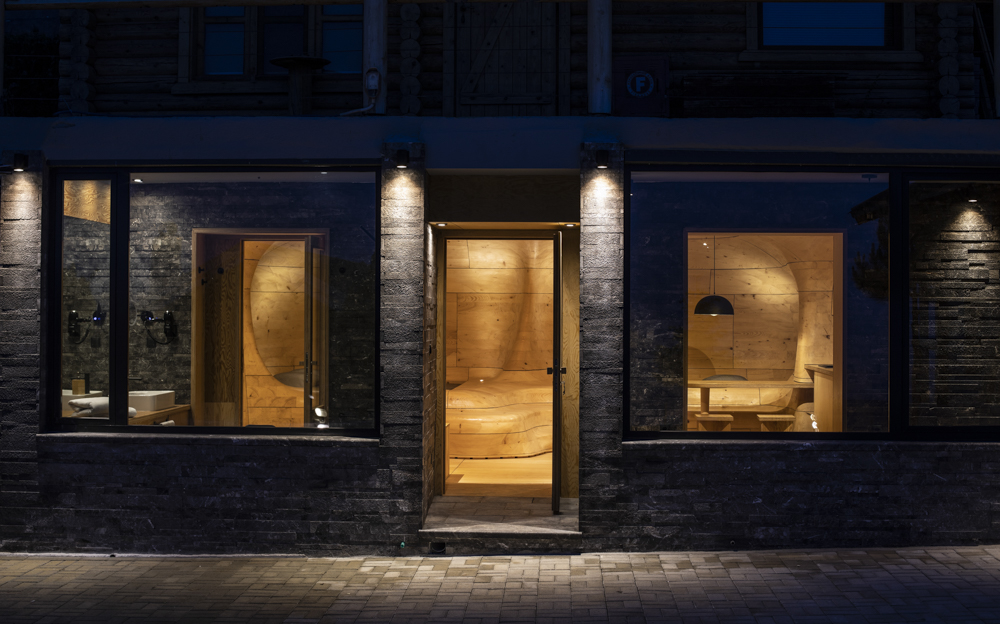
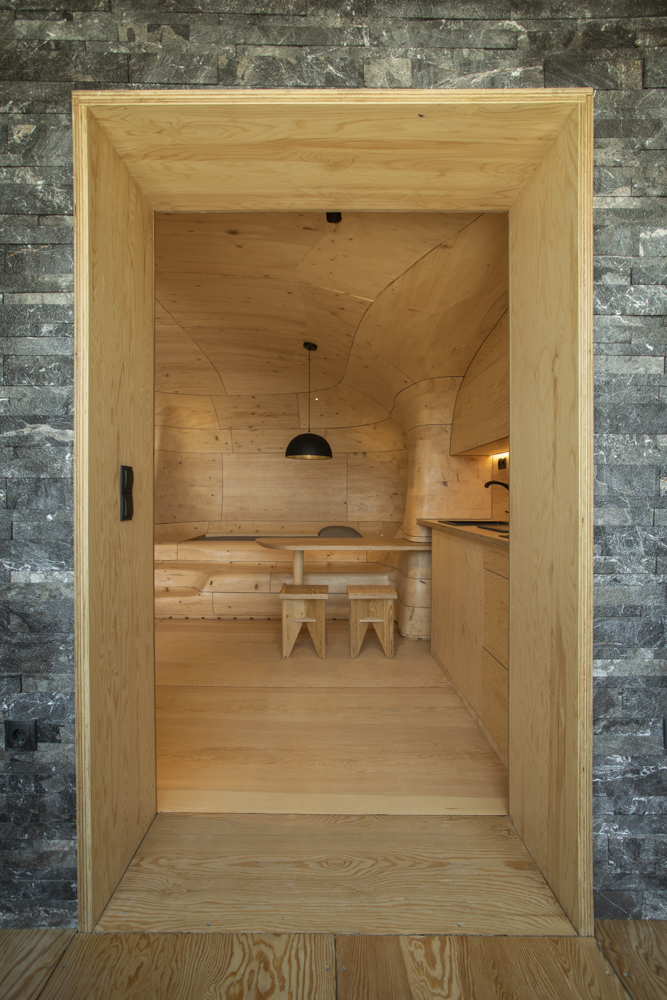
Wooden Cave by Tenon Architecture
The drawings of each piece were produced algorithmically and transferred on-site, where the pieces were processed manually and converted into 55 larger modules. These were then hand-carved and shaped before the final assembly of the structure. The whole process was carried out by the two members of the team; no carpenters, workers, or other technicians were employed. The striking resulting space makes the visitors feel safe, while creating a distinction between a hard protective exterior and a warm and inviting interior.
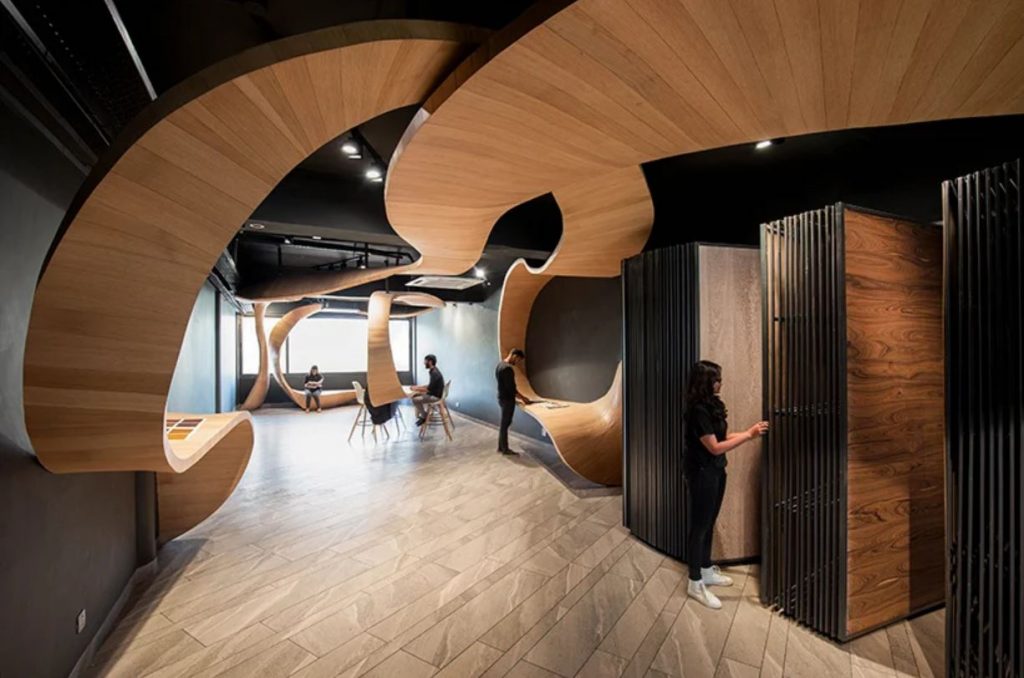
Timber Rhyme by Studio Ardete
Local Studio Ardete has designed a whimsical plywood installation for a retail shop in a market complex in Chandigarh, India. Named Timber Rhyme and represented through the ribbon that pours itself into space, it aims to liven a walk through the first storey of the shop, as one enters from the rear end, and envelop visitors in a dynamic experience.
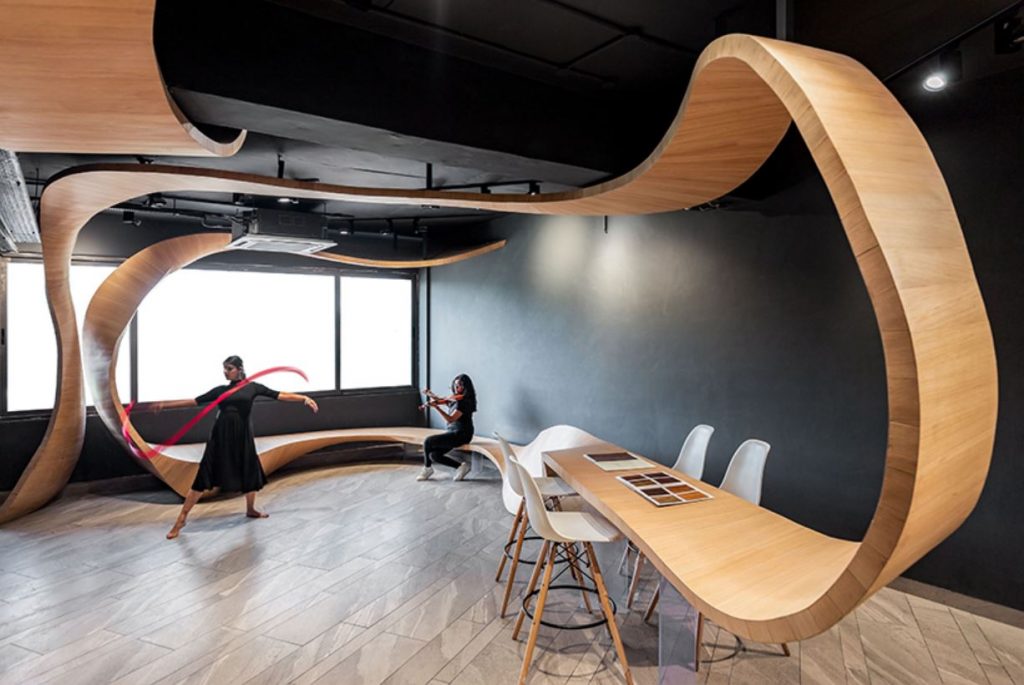
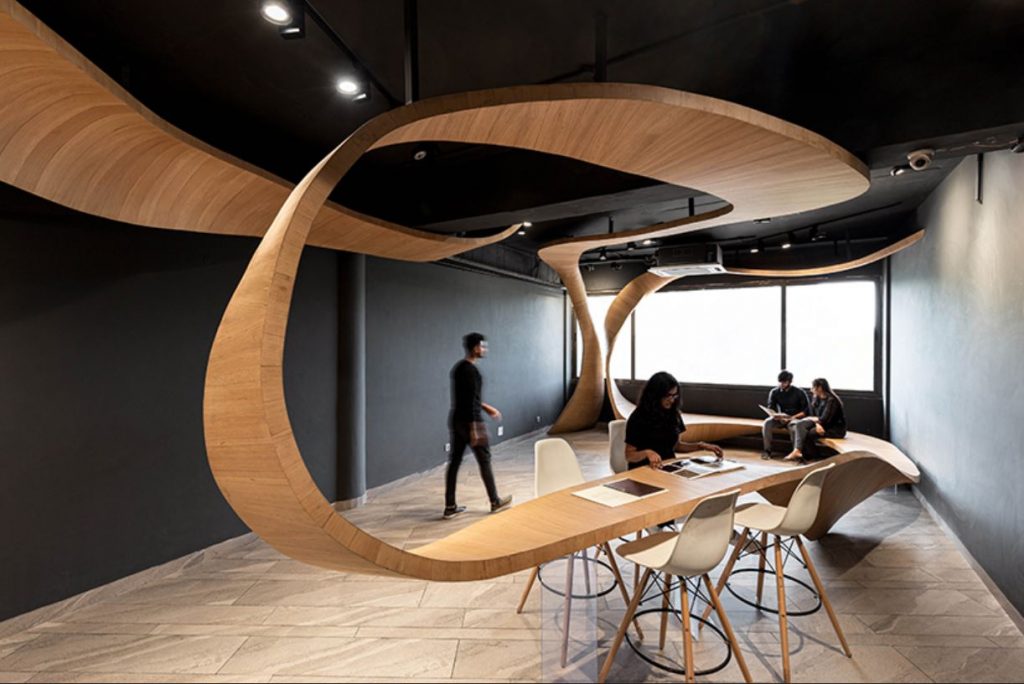
Timber Rhyme by Studio Ardete
As the visitor proceeds through the space, his eye meets varying focal points each at a different elevation than previous. The ribbon seems to blur the boundaries between static and movable components of the built space. Mirroring the undulating structure is a series of ‘wooden ribbons’ twisting and turning to form the display shelves, sitting spaces, meeting table and other design elements each flowing into the other.
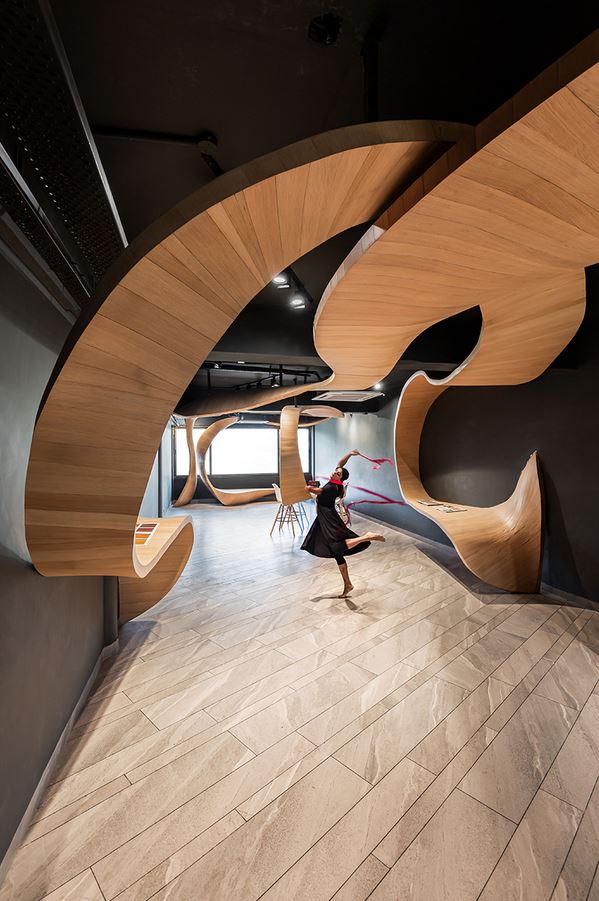
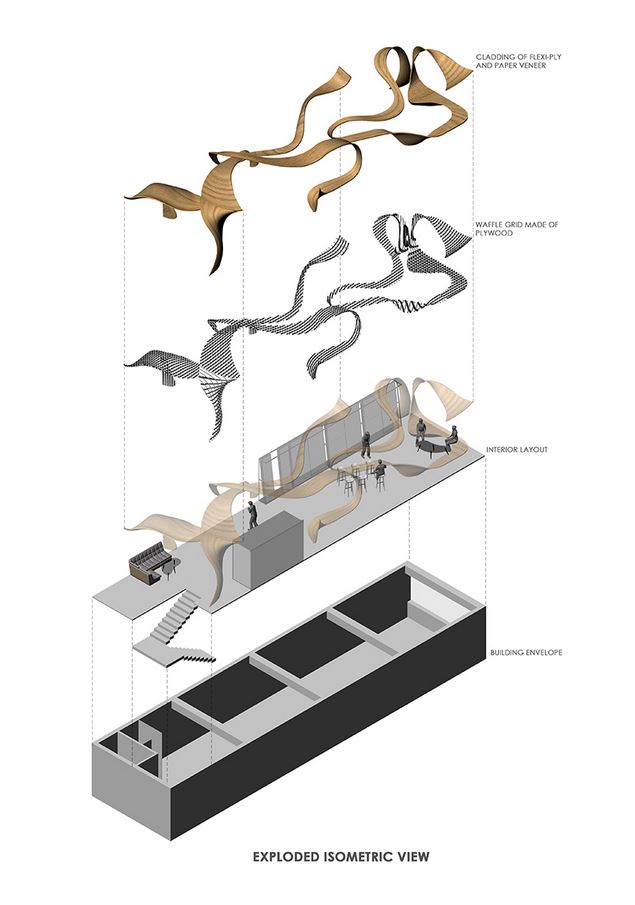
Timber Rhyme by Studio Ardete
The installation is crafted from digitally fabricated 19mm thick plywood ribs using a definition developed in Grasshopper and CNC milling. They were then jig-sawed by the carpenters in-situ in a unidirectional arrangement to correctly align to the next segment. In the last stage of finishing the ribs, which involved filling the flexi-ply joints with wood filler and sanding them, the carpenters took ownership for the process from technology using their skills to breathe life into the finished structure.
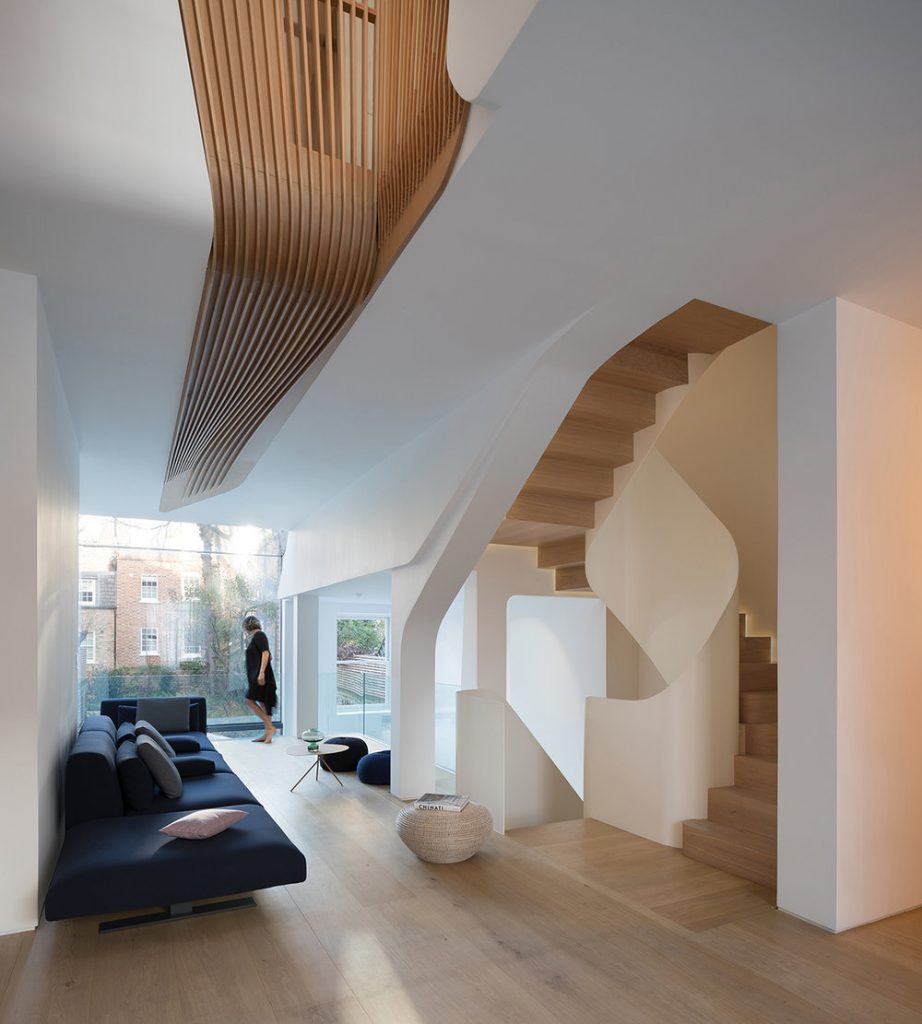
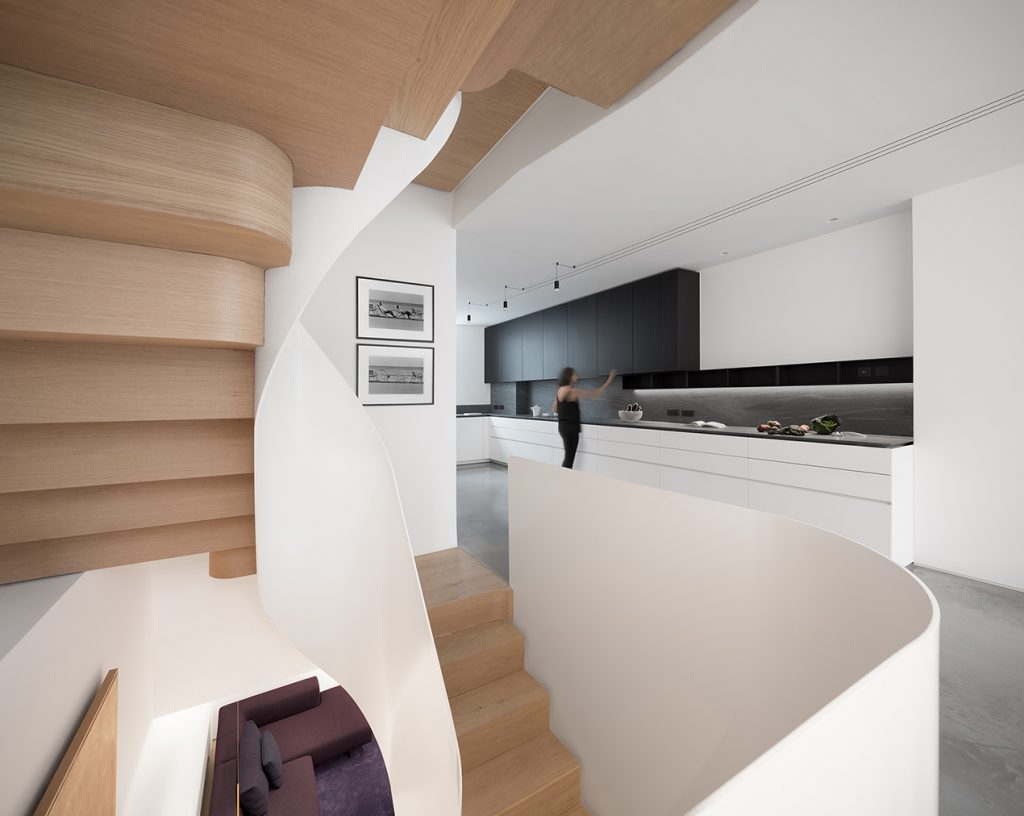
Contemporary use of wooden elements has helped two London-based studios – Flow Architecture and MAGRITS (Maria Grazia Savito Architects) – to create a contemporary project challenging the traditional way of living in the historical housing stock in the London borough of Kensington.
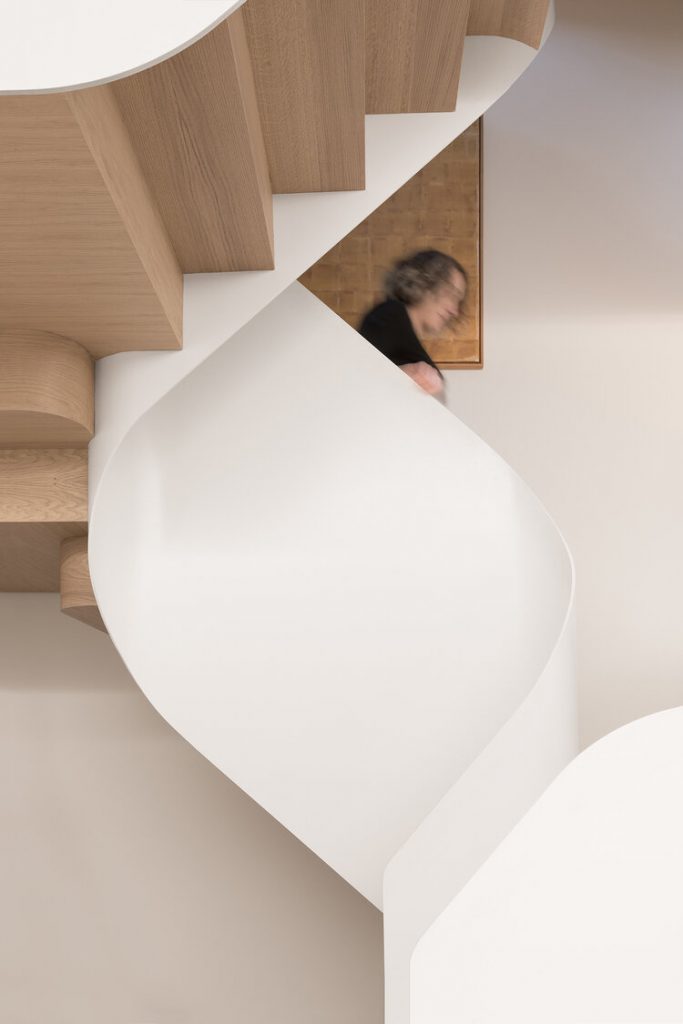
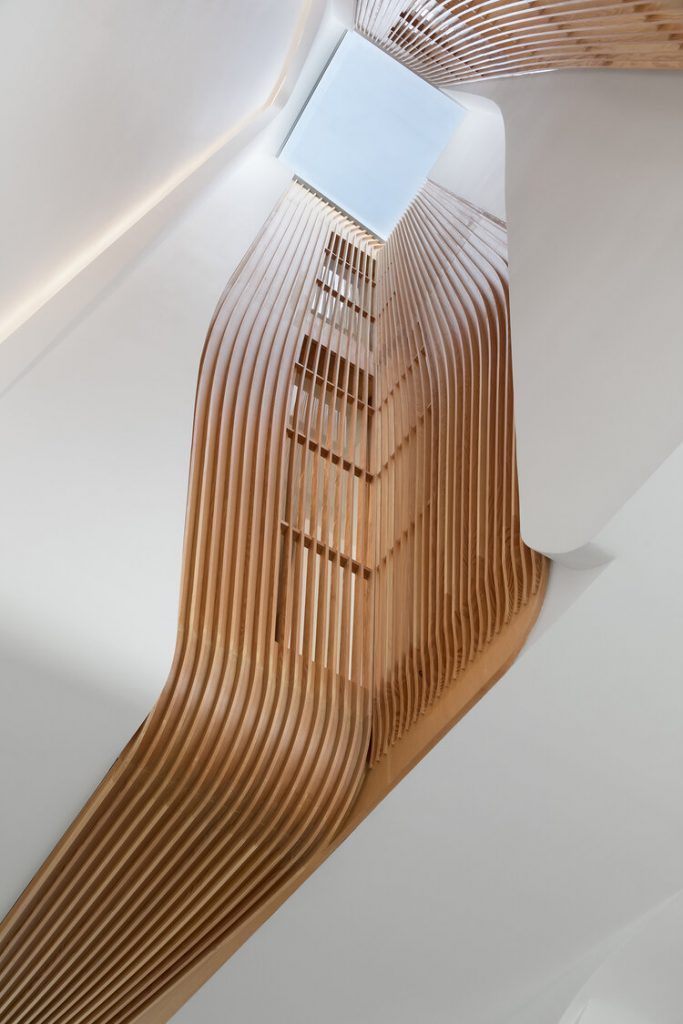
Light Falls by Flow Architecture and MAGRITS
The Light Falls project, which included an almost complete demolition and reconstruction of the existing dwelling in a Victorian terraced house, features an entirely new organisation that revolves around a new interior courtyard acting as a visual centre to the living spaces, which are opened on each other as much as possible.
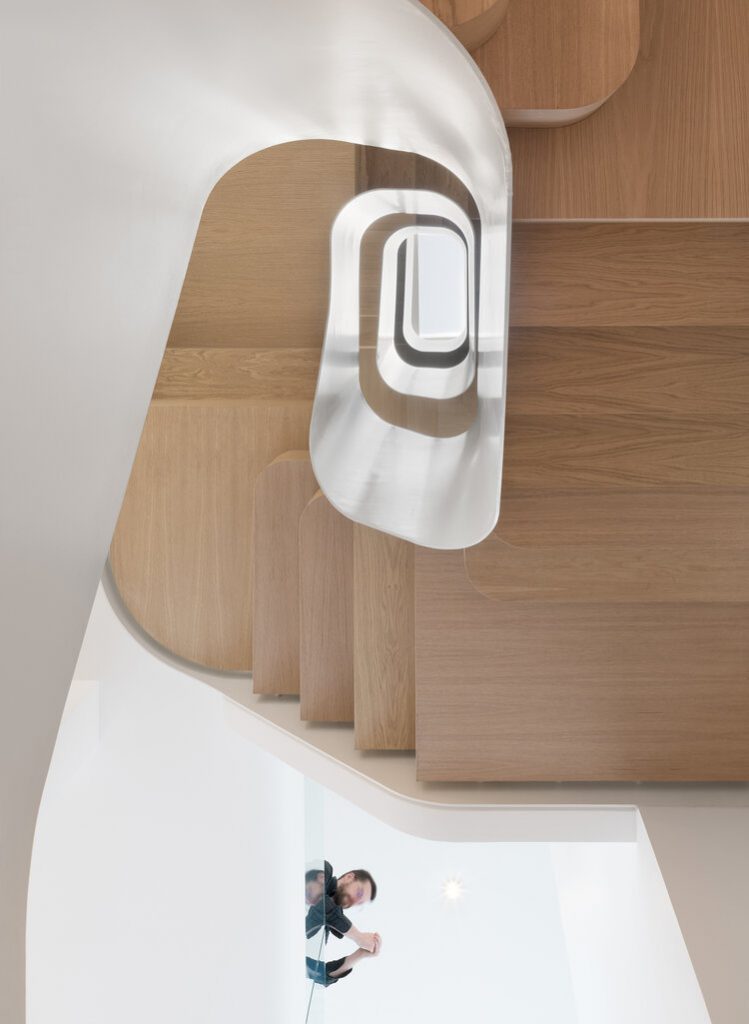
Light Falls by Flow Architecture and MAGRITS
The staircase, similarly, opens completely towards the bottom section to distribute access to the various family areas. At the rear, the dining room opens up towards the garden with double height glass extension.
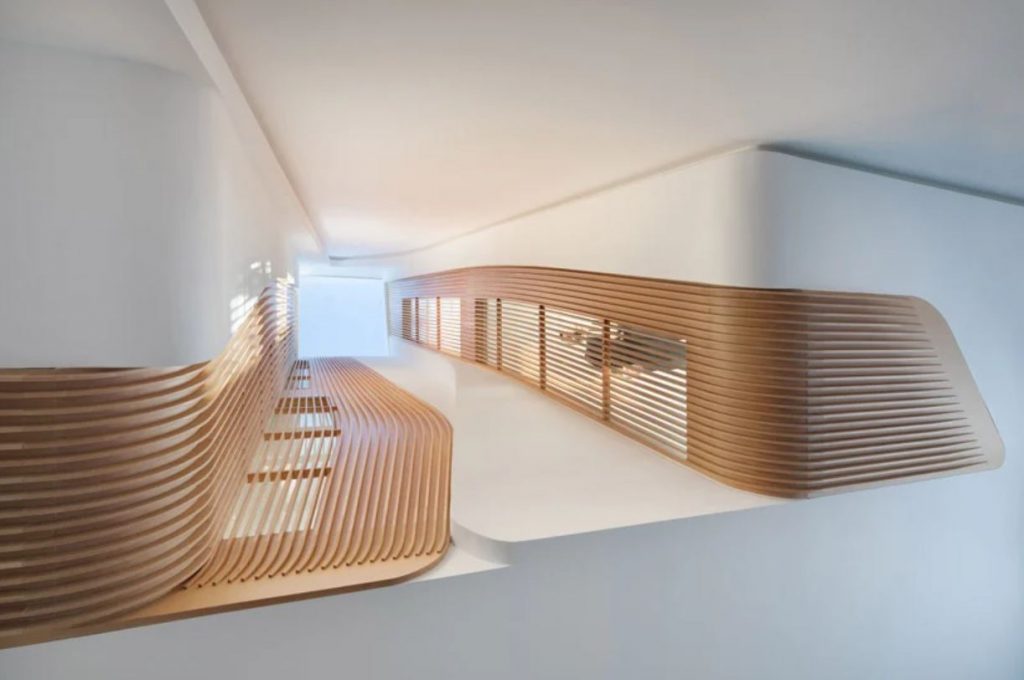
Light Falls by Flow Architecture and MAGRITS
With their sculptural yet fluid treatment, the vertical perforations of the courtyard and the open staircase all wrapped up in a warm, wooden finish offer spectacular and unexpected visual connections within the house and with the outdoors, letting daylight filter into the dwelling and cast ever-changing shadow play on its white-washed walls.